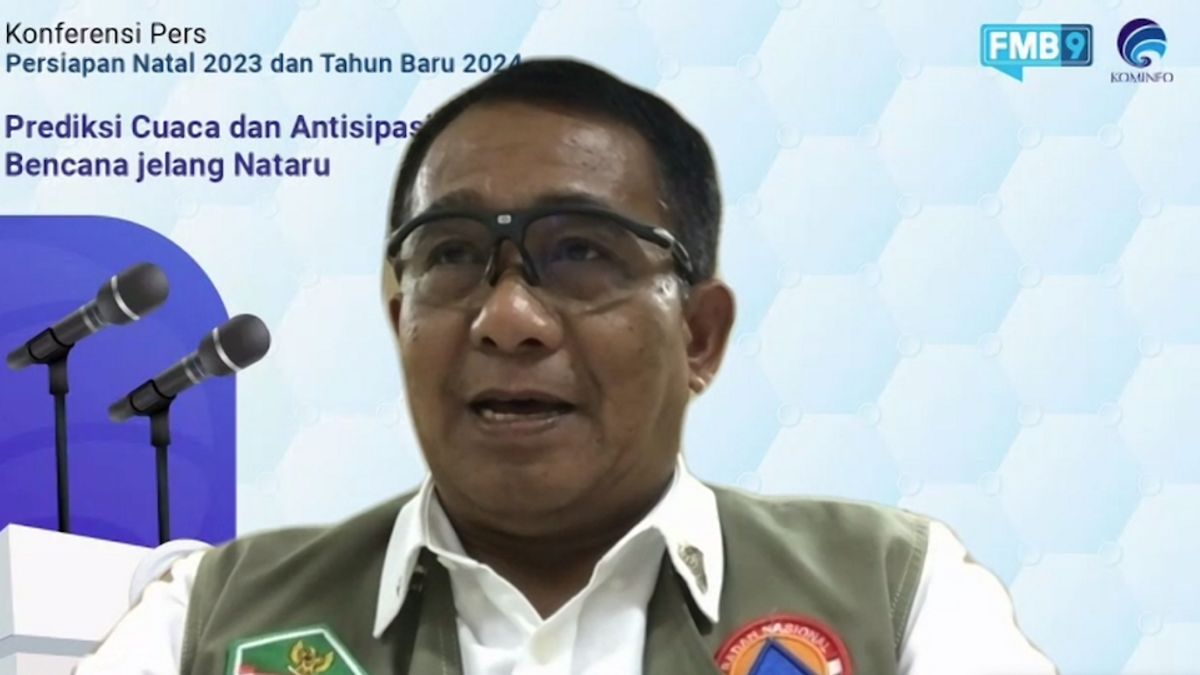JAKARTA Indonesia has experienced the phenomenon of El Nino and the sea temperature (SML) since the middle of this year. Although this phenomenon is still ongoing, its condition is quite weak.
Deputy for Emergency Management of BNPB Major General TNI Fajar Setyawan said that the El Nino index in Indonesia is currently positive. This means that this year's El Nino phenomenon is above normal conditions.
"Currently, the territory of Indonesia is influenced by the El Nino phenomenon, which is currently moderate, 2.19 positive," Fajar said at the Press Conference on Weather Predictions and Anticipation of Disasters Ahead of Nataru on Friday, December 22.
Looking at the increasingly positive index, of course El Nino has had a fairly strong impact on rainfall. According to BNPB's findings, the rainfall this year has decreased considerably compared to the previous year.
"We saw several years ago, we saw this one example, the amount of rainfall in Juanda ranged from 2,800 to 2,900 millimeters per year. However, yesterday until early December it only reached 1,700," explained Fajar.
Fajar did not elaborate further on the impact of the reduction in rainfall due to El Nino. However, Fajar said that this phenomenon will continue until February or March next year.
Actually, El Nino is not a new phenomenon. El Nino has been going on for centuries and generally occurs about two to seven years. However, due to the problem of global warming, El Nino's timeframe becomes every two to three years.
SEE ALSO:
This is of course a concern by people around the world, including the Meteorology, Climatology and Geophysics Agency (BMKG) in Indonesia. Some time ago, BMKG Head Dwikorta Karnawati said that climate change was a serious problem.
The reason is, climate change can make El Nino's index even more positive. If El Nino continues to occur intensely every two to three years, there is a possibility that Indonesia or other countries will face drought and limited resources and food.
Therefore, various countries in the world continue to voice the prevention of climate change, one of which is by suppressing carbon emissions. When net zero emissions are achieved, carbon pollution will soon be handled and the problem of climate change will not often occur as it is today.
The English, Chinese, Japanese, Arabic, and French versions are automatically generated by the AI. So there may still be inaccuracies in translating, please always see Indonesian as our main language. (system supported by DigitalSiber.id)

















